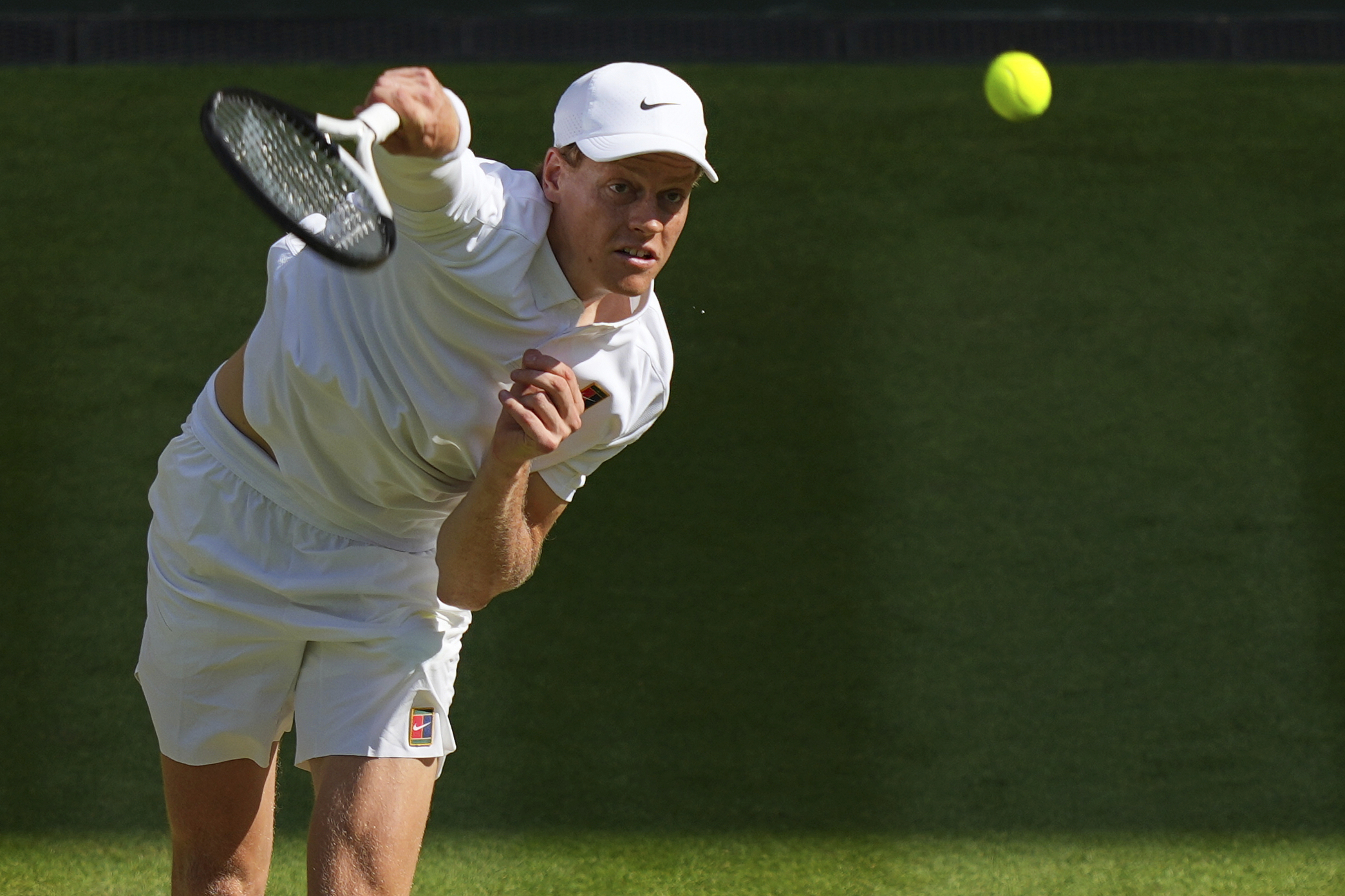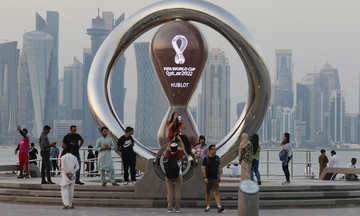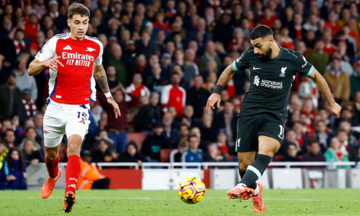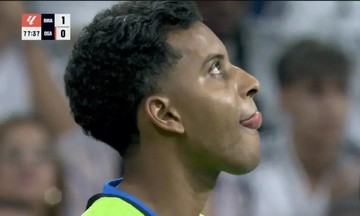Three key moments at Centre Court highlighted Sinner's bold serving strategy, a recurring and effective tactic throughout the tournament.
Set three: 4-3, 30-all
Sinner held a slight advantage from the middle of the second set, but Alcaraz saved two break points early in the third, fighting back to lead 4-3. At 30-15 on Sinner's serve, the Spaniard leveled the score with a brilliant sequence of a drop shot followed by a lob. Sinner then faulted on his first serve at 199 km/h.
Against a returner like Alcaraz, a powerful second serve at this tense moment was a gamble. Instead of playing it safe, Sinner unleashed a 188 km/h second serve that clipped the sideline, leaving Alcaraz no time to react.
 |
Jannik Sinner serves during his Wimbledon men's singles final victory against Carlos Alcaraz at Centre Court, London, on 13/7. Photo: AP |
Jannik Sinner serves during his Wimbledon men's singles final victory against Carlos Alcaraz at Centre Court, London, on 13/7. Photo: AP
"Sinner knew that a short serve would be attacked by Alcaraz, possibly even with a volley return. It was a calculated risk," coach and former world number 135 Julien Varlet analyzed in L'Equipe.
This ace at 30-all was followed by another on his first serve, and then a break point at 4-4, securing the third set for Sinner.
Set four: 4-3, 15-40
Now a set and a break up, Sinner was two games from the championship. But at 4-3 on his serve, he appeared tense, making errors, notably a clumsy forehand, and facing two break points for the first time since the second game of the second set. At 15-40, his 211 km/h body serve sailed long.
Mirroring the earlier set, Sinner put everything into his second serve. A 177 km/h cross-court serve caught Alcaraz off guard, forcing an error on the return.
"Sinner didn't want to engage in further rallies, so he decided to take control with his serve, prioritizing the first, but using the second with equal force when necessary," commentator Fabrice Santoro noted on beIN Sports.
Set four: 4-3, advantage Sinner
Two points later, having saved the second break point, Sinner had a chance to hold serve for 5-3. His first serve went out, but on the second, he fired a 190 km/h shot into the T, leaving Alcaraz stranded.
"As he did throughout the final, Sinner repeatedly took risks on his second serves, yet only double-faulted twice in the entire match," Santoro praised.
Varlet added, "Sinner's serve quality was exceptional. Despite a few first-serve hiccups late in the match, his second serve was superb, consistently deep and well-placed."
According to Varlet, Sinner's outside serve at 40-40, with its spin forcing Alcaraz wide, was particularly effective, as was his flat outside serve at advantage.
Seven-time Grand Slam champion Mats Wilander observed that Sinner's "first serve wasn't particularly strong in the final, similar to Alcaraz."
However, Wilander lauded the quality of Sinner's second serves. "They reflect the rest of his game, a mentality of playing his way, hitting every shot with full commitment, not overly concerned with the opponent's return, just focused on playing his best. That requires immense self-belief, which is central to Sinner's philosophy," he concluded.
Hoang Thong (adapted from L'Equipe)












